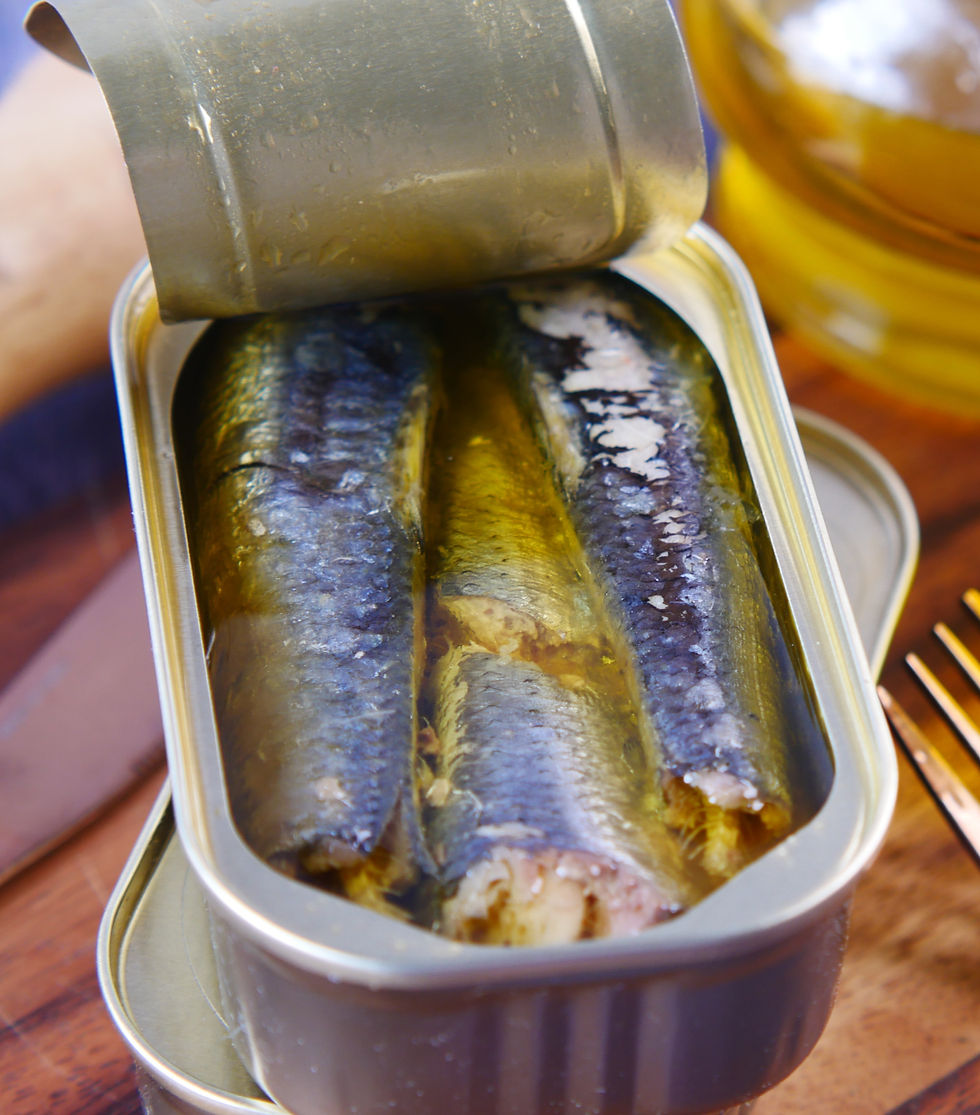Understanding PUFAs vs. Saturated Fats: What Science Actually Says
- Nicole Barney
- Jan 20
- 3 min read
Updated: Feb 21

For decades, we were told that saturated fats were the enemy—clogging arteries, raising cholesterol, and increasing the risk of heart disease. Meanwhile, polyunsaturated fatty acids (PUFAs), especially those found in vegetable oils, were promoted as heart-healthy alternatives. But what if we’ve had it all wrong?
Emerging research is challenging long-held beliefs about dietary fats, revealing that not all fats are created equal—and that some of the most commonly consumed oils today may be doing more harm than good. Let’s break down the science behind PUFAs and saturated fats, the impact they have on your health, and what you should actually be eating.
Understanding PUFAs and Saturated Fats
What Are PUFAs?
Polyunsaturated fatty acids (PUFAs) are a type of fat found in seed oils, nuts, fish, and some animal products. They include omega-3s (anti-inflammatory) and omega-6s (pro-inflammatory in excess).
Common sources of PUFAs:
Industrial seed oils (canola, soybean, sunflower, safflower, corn oil)
Fatty fish (salmon, mackerel, sardines)
Nuts and seeds (walnuts, flaxseeds, chia seeds)
Processed foods (PUFA-rich oils are widely used in packaged goods)
While omega-3s provide clear health benefits, the problem arises with excess omega-6 intake, which promotes inflammation and oxidative stress when not balanced with omega-3s.
What Are Saturated Fats?
Saturated fats are stable fats that remain solid at room temperature and are resistant to oxidation. For years, they were demonized due to concerns about cholesterol and heart disease, but modern research suggests otherwise.

Common sources of saturated fats:
Grass-fed beef and lamb
Butter and ghee
Coconut oil
Tallow and lard
Dairy products
Unlike PUFAs, saturated fats are chemically stable, meaning they don’t oxidize as easily, which makes them a healthier choice for high-heat cooking.
The Science: Are PUFAs Really That Bad?
Oxidation and Inflammation: The Hidden Dangers of PUFAs
One of the biggest concerns with PUFAs is their chemical instability. Because they are highly unsaturated, they are prone to oxidation when exposed to heat, light, or air. Oxidized fats create free radicals, which contribute to inflammation, cellular damage, and chronic diseases like heart disease, cancer, and metabolic dysfunction (Source: Journal of Lipid Research).
Studies show that excess omega-6 intake is linked to increased inflammation and higher risk of chronic disease (Source: American Journal of Clinical Nutrition).
Seed oils rich in PUFAs are often chemically processed, further increasing their oxidative damage potential.
Saturated Fat and Heart Disease: The Myth Debunked

The long-standing belief that saturated fat clogs arteries has been largely disproven by recent meta-analyses.
A 2010 meta-analysis published in the American Journal of Clinical Nutrition reviewed data from over 350,000 participants and found no significant evidence that saturated fat increases the risk of heart disease.
Another study published in the British Medical Journal found that replacing saturated fats with PUFAs did not lead to better heart health outcomes and, in some cases, increased mortality.
Saturated fats play a crucial role in hormone production, cell membrane integrity, and nutrient absorption. The key is quality—sourcing fats from grass-fed, pasture-raised, and organic sources whenever possible.
Which Fats Should You Be Eating?

Best Fats for Cooking
When cooking at high temperatures, it’s essential to use fats that remain stable and resist oxidation.
Best choices: Butter, ghee, coconut oil, tallow, lard
Avoid: Vegetable oils (canola, soybean, corn, sunflower, safflower)

Balancing Omega-3s and Omega-6s
To reduce inflammation, the ideal omega-6 to omega-3 ratio should be around 4:1 or lower—yet most modern diets are closer to 20:1, heavily skewed toward omega-6s.
To correct this imbalance:
Prioritize wild-caught fatty fish (salmon, mackerel, sardines) for omega-3s.
Use extra virgin olive oil as a primary cold-use fat.
Avoid processed foods and fast foods, which are loaded with PUFA-rich seed oils.
Final Thoughts: Rethinking Dietary Fats
We’ve been told for years that PUFAs are heart-healthy and that saturated fat is dangerous, but the science tells a different story. The reality is that:
Industrial seed oils and excessive omega-6 intake promote inflammation and chronic disease.
Saturated fats, when sourced properly, are not harmful and may even be beneficial.
The best approach is a balanced intake of whole-food fats with a focus on stability and nutrient density.
By making informed choices about the fats you consume, you can reduce inflammation, support metabolic health, and improve overall well-being.
You May Also Like: New Study Confirms Eating Too Much Sugar Accelerates Cellular Aging
This post may contain affiliate links. We may earn a commission if you make a purchase through these links.



